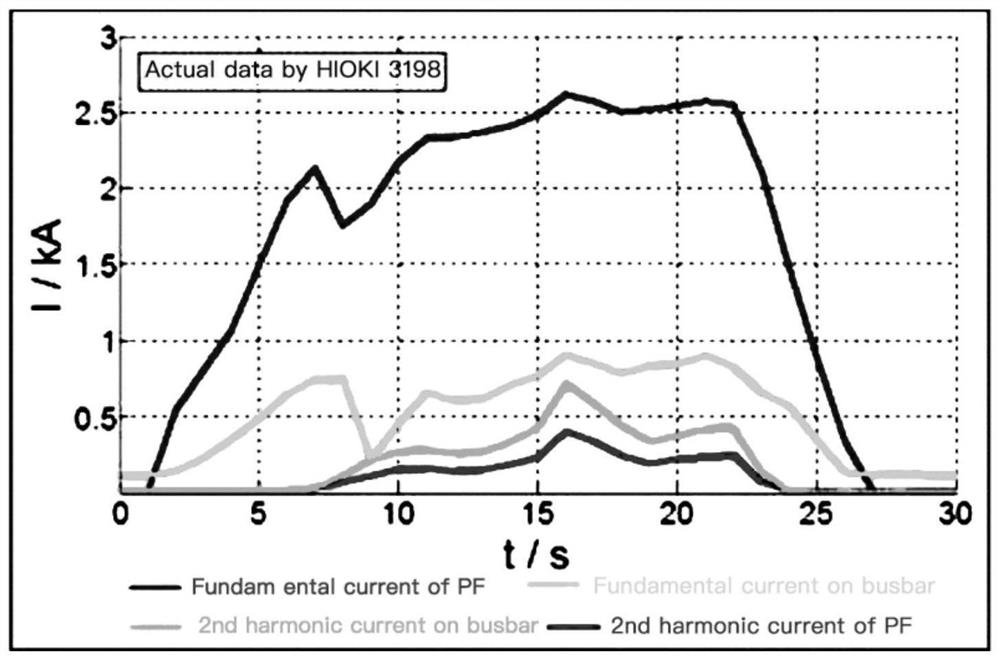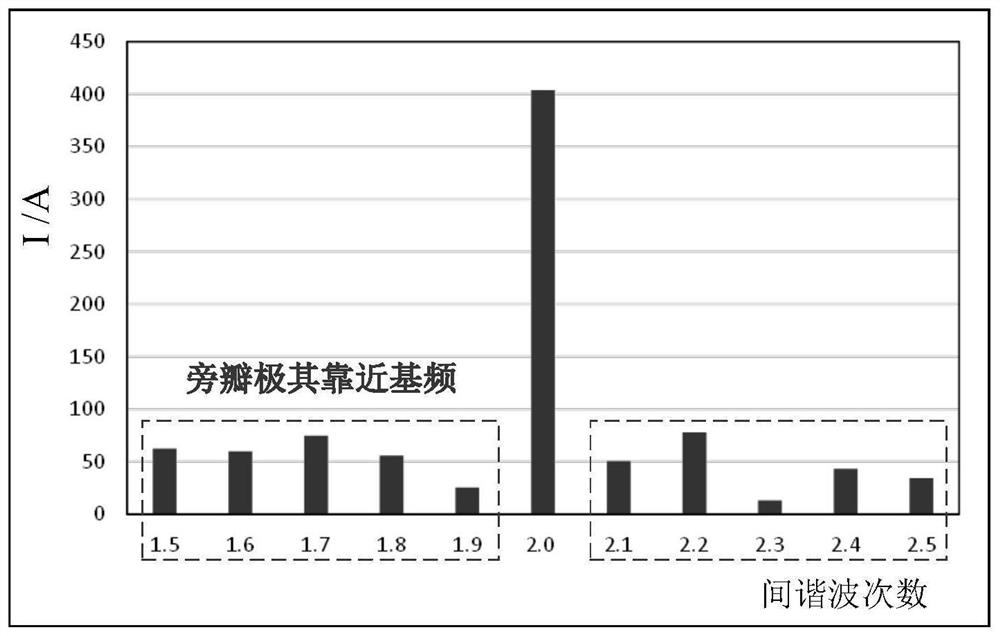Detection method for low-frequency non-stationary signals
A technology of non-stationary signal and detection method, which is applied in measurement devices, spectrum analysis, measurement of electrical variables, etc. Fast real-time detection and other issues
- Summary
- Abstract
- Description
- Claims
- Application Information
AI Technical Summary
Problems solved by technology
Method used
Image
Examples
Embodiment Construction
[0041] The principles and features of the present invention are described below in conjunction with the accompanying drawings, and the examples given are only used to explain the present invention, and are not intended to limit the scope of the present invention.
[0042] Through the data analysis of a large number of harmonic currents generated by a high-power impact load operation, it is concluded that figure 1 The fundamental / second harmonic current distribution shown, extracts the following figure 2 The second harmonic and its surrounding interharmonic emission phenomenon shown;
[0043] Depend on figure 1 , 2 It can be seen that the amplitude of the second harmonic and its interharmonics is large and close to the fundamental frequency signal with an amplitude of up to 2kA, and the transition band of the signal to be extracted is very narrow, which brings great challenges to the traditional detection method. In addition, other integer harmonics (mainly the 3rd, 5th, 7t...
PUM
 Login to View More
Login to View More Abstract
Description
Claims
Application Information
 Login to View More
Login to View More - R&D
- Intellectual Property
- Life Sciences
- Materials
- Tech Scout
- Unparalleled Data Quality
- Higher Quality Content
- 60% Fewer Hallucinations
Browse by: Latest US Patents, China's latest patents, Technical Efficacy Thesaurus, Application Domain, Technology Topic, Popular Technical Reports.
© 2025 PatSnap. All rights reserved.Legal|Privacy policy|Modern Slavery Act Transparency Statement|Sitemap|About US| Contact US: help@patsnap.com



